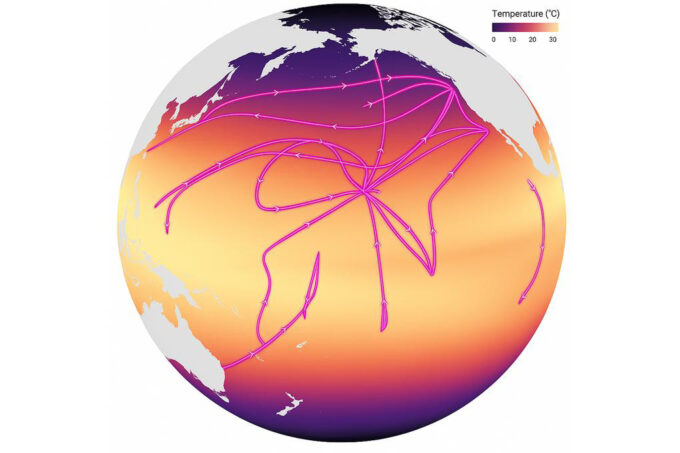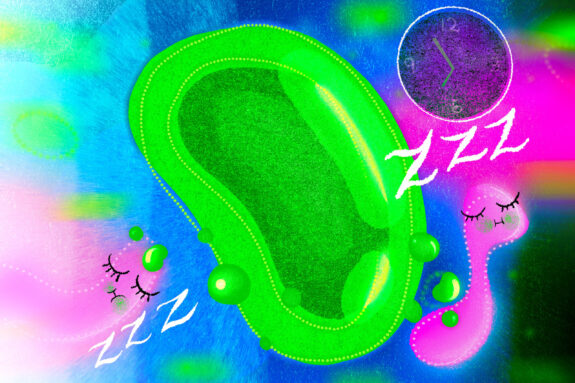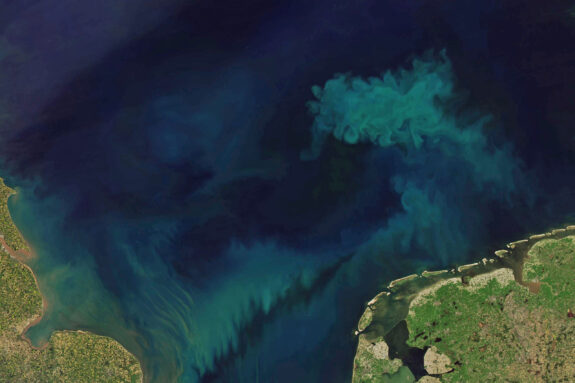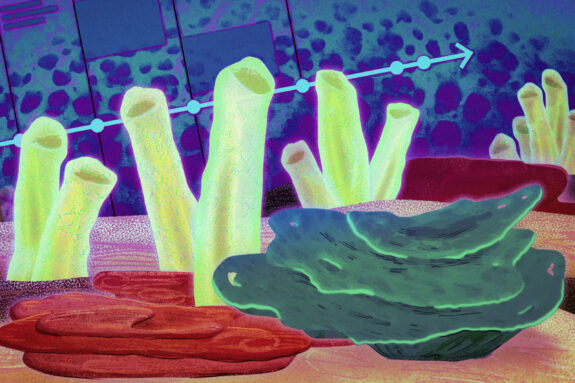Warming oceans may threaten key oxygen-producing microbe

One of the ocean's most abundant likely faces steep decline under future warming, according to new research cataloguing Prochlorococcus abundance using SeaGlow continuous flow cytometry. —Image credit: François Ribalet/University of Washington
Read more about this research and other projects supported by the Simons Collaboration on Computational Biogeochemical Modeling of Marine Ecosystems (CBIOMES), which seeks to develop and apply quantitative models of the structure and function of marine microbial communities at seasonal and basin scales.
A new study led by researchers from the University of Washington and MIT reveals that future ocean warming could dramatically reduce populations of Prochlorococcus, the planet’s most abundant photosynthetic organism and a cornerstone of marine ecosystems. The findings, published in Nature Microbiology, challenge longstanding assumptions about the resilience of this tiny cyanobacterium and suggest that even moderate climate change scenarios could trigger cascading effects throughout the ocean’s food web.
Prochlorococcus thrives in the sunlit, nutrient-poor waters of tropical and subtropical oceans, where it contributes nearly half of the phytoplankton biomass. Its small size and streamlined genome have long been seen as evolutionary advantages, allowing it to dominate vast swaths of the ocean. But the new research shows that this minimalist strategy may come at a cost: a narrow thermal tolerance that could spell trouble as global temperatures rise.
“Prochlorococcus has evolved to be incredibly efficient in stable, low-nutrient environments,” said lead-author Francois Ribalet, a research scientist at the University of Washington. “But our data show that it’s surprisingly sensitive to temperature increases beyond 28 degrees Celsius — a threshold that many tropical regions are expected to exceed by the end of the century.”
To uncover this vulnerability, the team analyzed over a decade of field data collected using SeaFlow, a shipboard flow cytometer that continuously measures phytoplankton size and fluorescence. The instrument captured data from approximately 800 billion cells across 200,000 kilometers of the Pacific Ocean. Using a size-structured matrix population model, the researchers estimated Prochlorococcus division rates in situ — without disturbing the natural environment.
Their analysis revealed a striking pattern: division rates increased with temperature up to about 28°C, then declined sharply. Above this threshold, Prochlorococcus populations showed a nearly threefold reduction in growth, with cell abundances halving by 30°C. This decline was not observed in Synechococcus, a closely related cyanobacterium, which maintained robust populations in warmer waters.
“This differential response strongly suggests that temperature stress — not nutrient limitation — is the primary driver of Prochlorococcus decline,” said co-author Stephanie Dutkiewicz, a principal research scientist in MIT’s Department of Earth, Atmospheric and Planetary Science, affiliated with the MIT Center for Sustainability Science and Strategy. “It’s a physiological constraint that we hadn’t fully appreciated before.”
To assess the broader implications, the researchers incorporated their findings into the MIT Darwin marine ecosystem model, which simulates interactions among dozens of plankton types and tracks biogeochemical processes across the global ocean. They ran simulations under two climate scenarios: a moderate warming pathway (RCP4.5) and a high-emissions trajectory (RCP8.5).
The results were sobering. Under the moderate scenario, Prochlorococcusproduction in tropical regions is projected to decline by 17%, while the high-emissions scenario could lead to a 51% drop. In some areas, such as the Western Pacific Warm Pool, the model predicts near-total collapse of Prochlorococcuspopulations.
Even when the researchers introduced a hypothetical warm-adapted strain — with a higher thermal optimum and faster division rate — the model still showed significant declines in the hottest regions. “Thermal adaptation may delay the impacts, but it won’t prevent them,” Ribalet said.
The decline of Prochlorococcus could have far-reaching consequences. As a primary producer, it fuels marine food webs and plays a key role in carbon cycling. Its loss could disrupt mutualistic relationships with other microbes, reduce the efficiency of carbon transfer to higher trophic levels, and alter the composition of marine ecosystems.
Interestingly, the model also predicts a compensatory rise in Synechococcuspopulations, which could partially offset the loss of Prochlorococcus. But this shift would fundamentally alter the structure of plankton communities, with unknown consequences for ocean health and biodiversity.
“This is a wake-up call,” said Dutkiewicz. “We need to rethink how we model phytoplankton responses to climate change. The assumption that all microbes will simply grow faster in warmer waters doesn’t hold true for Prochlorococcus.”
The study underscores the importance of integrating field data with ecosystem modeling to capture the complex responses of marine microbes to environmental change. It also highlights the need for more research into the thermal limits and adaptive potential of key species.
“Prochlorococcus has been a dominant force in the ocean for millions of years,” Ribalet said. “But the unprecedented pace of anthropogenic warming may push it beyond its evolutionary comfort zone — with consequences we’re only beginning to understand.”


